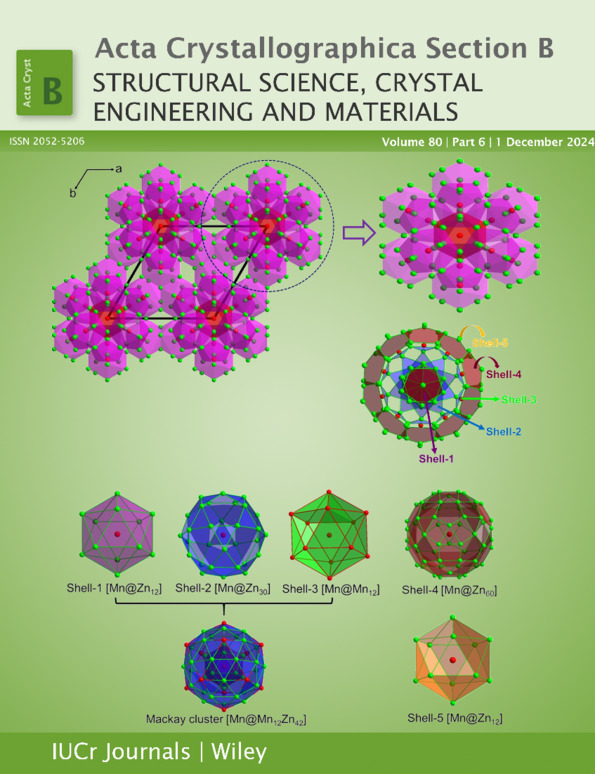Conformational disorder in quercetin dihydrate revealed from ultrahigh-resolution synchrotron diffraction
Abstract
Quercetin, a bioflavonoid abundant in plants, boasts antioxidant properties and plays a crucial role in various biological systems. The diffraction data of a quercetin dihydrate crystal have been measured at 20 (2) K to ultrahigh resolution (0.30 Å) using a synchrotron X-ray source. After meticulous multipolar refinement of the charge density, Fourier residual electron density peaks were identified, particularly at the position of hydrogen atom H15 of the catechol ring. This observation revealed a subtle disorder in the molecule, prompting the modelling of the catechol ring in two positions with occupancy percentages of 98.4% and 1.6% in the anti and syn conformations, respectively. Intermolecular interactions are analysed using Hirshfeld fingerprint plots and enrichment ratios. With the presence of numerous O—H…O hydrogen bonds, the packing shows good electrostatic complementarity between the quercetin molecule and its surroundings. The parallel displaced stacking interaction between two anti-quercetin molecules related by a translation along the a axis is, however, not attractive for its electrostatic contribution. The syn conformation shows more attractive quercetin dimers than the anti one. On the other hand, electrostatic interactions between quercetin and the two water molecules are stronger in the anti conformation. The electrostatic interactions of quercetin with human inositol polyphosphate multikinase were analysed in the structure of the complex found in the Protein Data Bank and compared with those the take place in the quercetin crystal packing.




